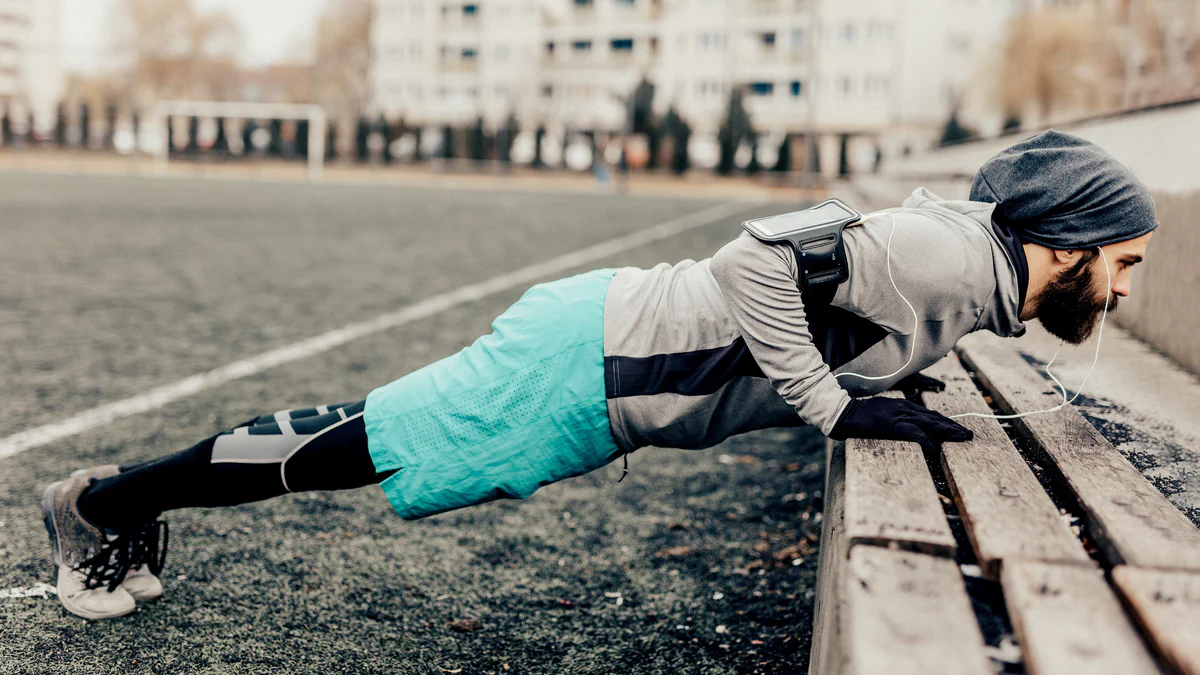4 Cold-Weather Training Tips to Spike Your Performance

For many athletes, this time of year means retreating to the relative warmth of a gym. But why? A few flurries and slushy puddles never hurt anyone. Plus, you can’t recreate the adverse conditions you might face during competition from the comfy confines of the squat rack.
“Cold weather training and competition simply require more preparation,” says Jeff Godin, Ph.D., and head of fitness education for Spartan Race. Here are his top tips for beating the common cold.
Related Link: Spartan Training Plans
1. Dress Like Goldilocks
Dressing in layers is key when training or competing in cold weather. “Wear a base layer of wool or polypropylene fabric that wicks sweat away and dries fast, then add a layer of fleece or thicker wool for insulation on top, and finally a shell,” says Godin. “The shell should protect against the wind and be weatherproof, but should also have a way to breathe so sweat can evaporate.”
That shell becomes even more important if you’re going to be in water at all. “Water is 24 times better at conducting heat than air and the body will lose heat four times faster in the water than the air,” says Godin. Make sure your shell stays dry by sealing it in a plastic bag and tucking it deep inside your pack. During a competition, you can carry extra dry layers this way, assuming you’re willing to chuck your wet ones to the wayside along your race route.
“Even on a relatively warm, overcast day, if you’re submerged in chilly water for any length of time you could become hypothermic,” says Godin, noting that hypothermia is a true medical emergency wherein your body is losing heat faster than you can produce it.
“When you start to shiver it’s time to worry,” he adds. “Shivering means your core temperature has dropped too low, and as a result your muscles are contracting in an effort to produce heat. If not caught in time the shivering becomes uncontrollable, the person then becomes disoriented, lethargic—almost intoxicated—and the condition is now life-threatening.”
One thing to avoid at all costs: cotton. “Cotton fabric traps tiny pockets of air in between the fibers to keep you warm,” explains Godin. “Once cotton gets wet, those pockets retain water and the clothing no longer keeps you warm.” Wet clothes will also draw heat out of the body, rather than keep it in.
2. Train Like a Small Rodent
Ideally, you’d train in the cold for any race that will be held in the cold. But if you live in a perpetually warm climate, this isn’t realistic. For these people Godin recommends cold showers.
“Cold showers or baths may help your body with the perception of the cold, making it easier to deal with psychologically,” says Godin. “It may also assist the body to produce more heat through non-shivering thermogenesis—the process where the body releases energy to produce heat without doing any work. Small rodents survive winter this way.”
For those in a variable climate, Godin suggests training outdoors wearing fewer layers to build a tolerance to the cold. “Also, the higher the altitude the colder it will get, so research whether your race will ascend and how high it will go, and pack your gear accordingly,” says Godin.
3. Know How to Raise Your Core Temp
Just as with a summertime sport, a winter event warmup pre-race is crucial for success: You want to raise your core temperature enough so your muscles are ready to rock, but not so much that you’re sweating profusely.
“Begin a general warmup with all your layers on," suggests Godin. “As your body temperature increases, gradually remove one layer at a time to prevent excessive sweating.”
A dynamic warmup should last about 15 minutes, or longer if it’s extremely cold. Once you’re warm, put your layers back on and keep moving to maintain your internal core temperature. “When core temperature drops, the first response of the body is to centralize the blood to keep the organs warm, moving it out of the extremities,” says Godin. “The body knows we can survive without fingers, but not without a heart.”
Keep moving until about five minutes before start time, then remove one layer so you start the event feeling slightly cold and don’t immediately start to sweat, says Godin.
4. Fuel Your Fire
During your event you’ll need to refuel, especially if you’re in it for the long haul. “Your body relies more on carbs when the temperature is cold, and carbs requires less oxygen than fat to metabolize, which is good if you’re at altitude,” says Godin. He recommends consuming about 60 grams of carbs every hour in the form of a sports drink, energy cube, or dried fruit.
And don’t forget to hydrate: Even if it’s not hot out, you’ll still be sweating, and as you rise in altitude the air becomes exceedingly dry. “Drier air leads to a higher rate of evaporation from the skin and through breathing,” says Godin. Drink about 7 to 10 ounces of fluid every 20 minutes, more if you’re working extra hard or are at nosebleed heights.

